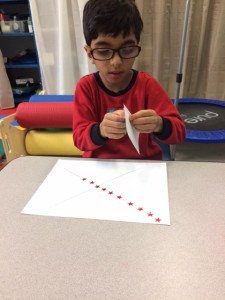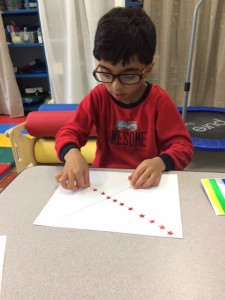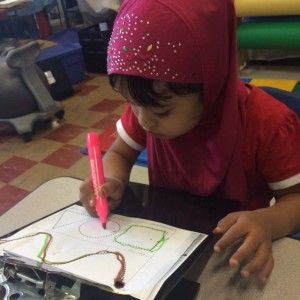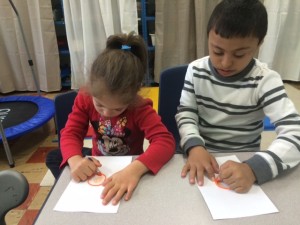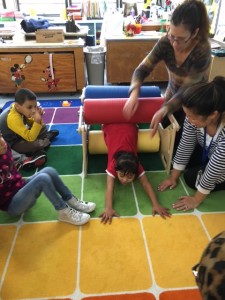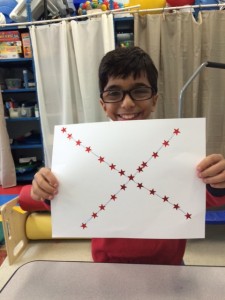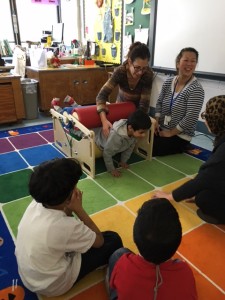If you are looking for a resource to address your child’s handwriting while they are home, please refer to the following link listed below. Learning Without Tears provides resources to address the underlying visual motor deficits when tackling handwriting difficulties that particularly address sizing/spacing/formation challenges. During the closing of schools, Learning Without Tears is offering free 90 day access to handwriting resources and 120 day access to keyboarding access. In addition they are offering free shipping on workbooks and materials until April 15th. Please visit http://LWtears.com/programs/distance-learning to gain access to more information, including how-to videos to support your use of these tools.
Author: Staci Ollar
Some information during the closing of school for the Coronavirus Pandemic…..
Because of the unique circumstances that this health crisis has caused, please focus on the health and safety of your family as that is the number one priority during this time.
The roots of Occupational Therapy practice goes back to function and play (the occupation of students) So….during this time, which is uncertain and can be scary to not only adults but also to our children, please focus on the time you can spend with your children and incorporate functional things and lots of PLAY into your schedule. Take family walks, have your children help in the kitchen, teach them chores they can do (fold towels, match socks, set the table, clean down surfaces, sort laundry by color, etc.).
As long as the weather holds out and with Spring around the corner have your children ride their bike, play basketball in your driveway, play with sidewalk chalk outside. The fresh air is good for everyone and play is the true occupation of children. Indoor play can incorporate play-doh, legos, coloring, making cards for neighbors/friends.
Read with your children, hold them close and try to have a schedule that will help promote some routine during these uncertain times. Limit the news on tv where your children can hear things that may cause more panic. Limit screens as much as possible (tv, I-pad, video games, etc.) in exchange for talking, taking family walks, outdoor play as well as indoor play with toys. This is the time to get creative – make forts, play board games and card games, create an indoor obstacle course by crawling under chairs, jumping, rolling on the carpet, etc.
The Occupational Therapy staff is awaiting further direction and will be posting OT activities. I will provide those more specific activity ideas as we develop them.
Until my next post – take care of yourself and your family, follow the protocols that we are given and we will get through all of this together !
What is the process for my child to receive OT at school?
Occupational Therapy (O.T.) is a skilled service that is offered to students who qualify for special education services and also qualify for occupational therapy based on an evaluation that shows evidence of a moderate to severe need.
A MTSS meeting (Multi-tiered system of support) is usually the first step when a teacher is concerned about a student’s academic/behavioral/emotional needs. It is in a MTSS meeting that a team of professionals discuss strategies to put into place to support a student. After data is tracked, it is determined if strategies were successful or if testing is appropriate to determine if a student would possibly qualify for special ed services and or further support should they qualify.
A parent also has the right to request testing if they suspect that their child may require special education support.
OT is not a stand alone service – a student must legally qualify for special education services to receive occupational therapy. Occupational Therapy supports both students and teachers so that students can maximize their potential as independently as possible in the least restrictive environment.
We focus on what the student is capable of, given modifications or strategies if needed. We also provide education to the staff regarding various disabilities and discuss strategies to enhance a student’s overall functioning.
How do Occupational Therapist’s work with students in school?
Crossing midline importance
Students who have trouble making letters and shapes, especially those with diagonal lines may also have trouble crossing the midline of their body.
If you can picture an imaginary line down the middle of your body, dividing your right side from your left side, this will help you learn how to cross the midline. We do this when we have a strong hand dominance. If you are right handed, you will most likely cross over the left side of your body to pick up an item.
Children who do not have a strong sense of either hand dominance or their body may avoid crossing over the midline. This affects our ability to integrate both the right and left hemispheres of the brain, therefore limiting reading and writing development.
So…if your child has messy handwriting or forms shapes that don’t look accurately, you may want to pay attention to see if they are crossing over the midline of their body.
If not, refer to braingym.org for crossing midline exercises.
Bridge the Gap….General Education/Special Education Initiative
This month, Mr. Joe, Mrs. Kraft and I have been educating our students in general education about our students with special needs. We have four self-contained special education classrooms and one resource room at Snow. We are more alike than we are different. We discussed why students may learn or behave differently and what we can do to be effective leaders. Students learned about empathy and kindness. You may want to further discuss this topic at home. We can always say hello, smile, offer a compliment and help a student up if they fall. These are examples of ways to connect with others. How would you want to be treated if you had a disability? We are confident in our Snow Students that if we are kind and compassionate, we can all work together!
Tips for School Success
Click here for evidence-based tips to help ensure a successful school year.
Sensory, Fine Motor and Visual Motor Activities at Snow
Sensory input helps maintain a “calm-alert” state for learning. Movement, deep pressure, touch, are examples of sensory input that help maintain this type of learning state. It is helpful to have students complete some type of sensory or movement task prior to seated work. This helps with not only focus/concentration but body awareness and muscle control as well. Children are wired to move so get them moving and you will see that they will be able to focus better. Coloring, peeling and placing stickers are great visual and fine motor activities.
